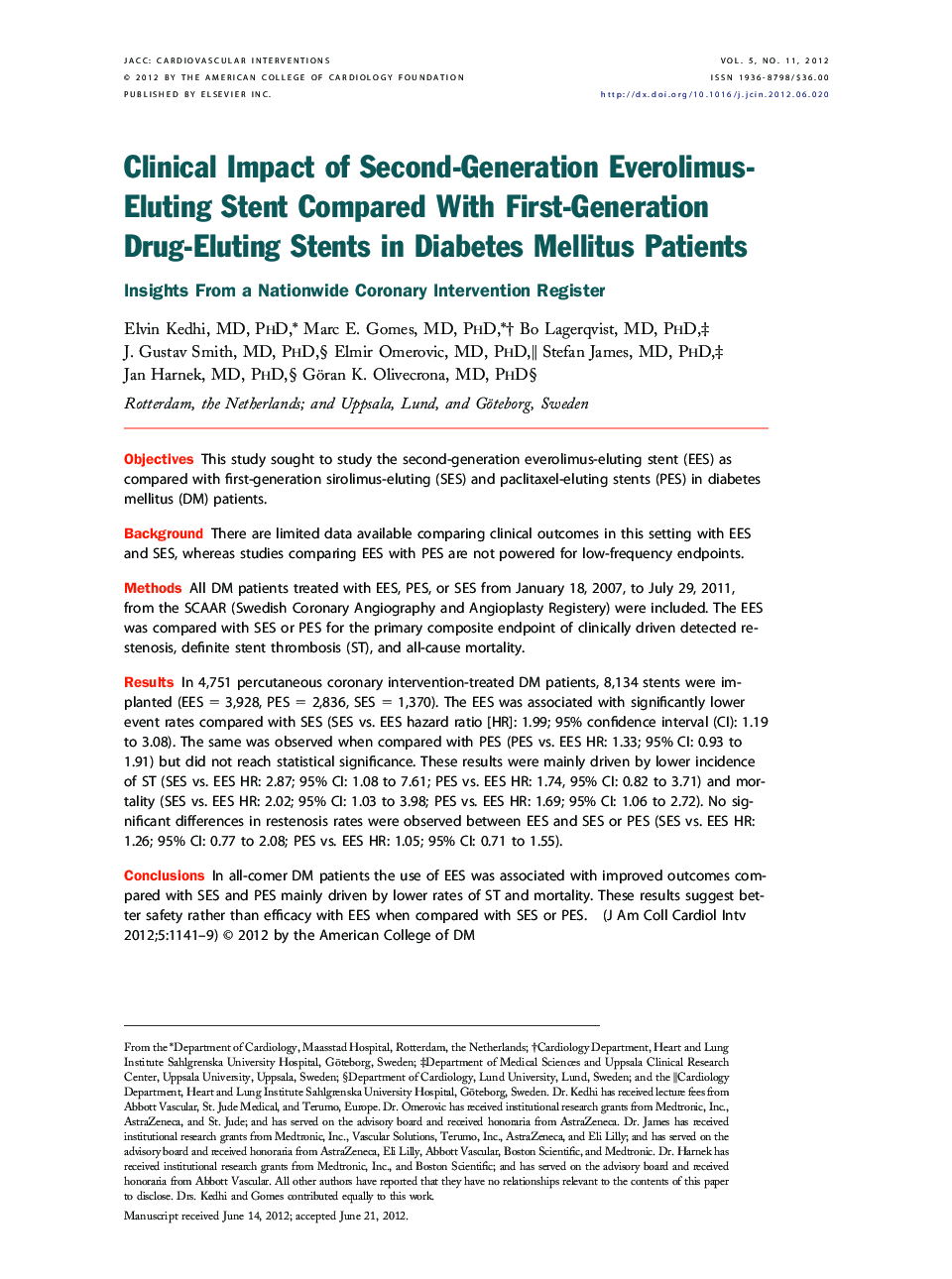| کد مقاله | کد نشریه | سال انتشار | مقاله انگلیسی | نسخه تمام متن |
|---|---|---|---|---|
| 2940831 | 1177046 | 2012 | 9 صفحه PDF | دانلود رایگان |

ObjectivesThis study sought to study the second-generation everolimus-eluting stent (EES) as compared with first-generation sirolimus-eluting (SES) and paclitaxel-eluting stents (PES) in diabetes mellitus (DM) patients.BackgroundThere are limited data available comparing clinical outcomes in this setting with EES and SES, whereas studies comparing EES with PES are not powered for low-frequency endpoints.MethodsAll DM patients treated with EES, PES, or SES from January 18, 2007, to July 29, 2011, from the SCAAR (Swedish Coronary Angiography and Angioplasty Registery) were included. The EES was compared with SES or PES for the primary composite endpoint of clinically driven detected restenosis, definite stent thrombosis (ST), and all-cause mortality.ResultsIn 4,751 percutaneous coronary intervention-treated DM patients, 8,134 stents were implanted (EES = 3,928, PES = 2,836, SES = 1,370). The EES was associated with significantly lower event rates compared with SES (SES vs. EES hazard ratio [HR]: 1.99; 95% confidence interval (CI): 1.19 to 3.08). The same was observed when compared with PES (PES vs. EES HR: 1.33; 95% CI: 0.93 to 1.91) but did not reach statistical significance. These results were mainly driven by lower incidence of ST (SES vs. EES HR: 2.87; 95% CI: 1.08 to 7.61; PES vs. EES HR: 1.74, 95% CI: 0.82 to 3.71) and mortality (SES vs. EES HR: 2.02; 95% CI: 1.03 to 3.98; PES vs. EES HR: 1.69; 95% CI: 1.06 to 2.72). No significant differences in restenosis rates were observed between EES and SES or PES (SES vs. EES HR: 1.26; 95% CI: 0.77 to 2.08; PES vs. EES HR: 1.05; 95% CI: 0.71 to 1.55).ConclusionsIn all-comer DM patients the use of EES was associated with improved outcomes compared with SES and PES mainly driven by lower rates of ST and mortality. These results suggest better safety rather than efficacy with EES when compared with SES or PES.
Journal: JACC: Cardiovascular Interventions - Volume 5, Issue 11, November 2012, Pages 1141–1149